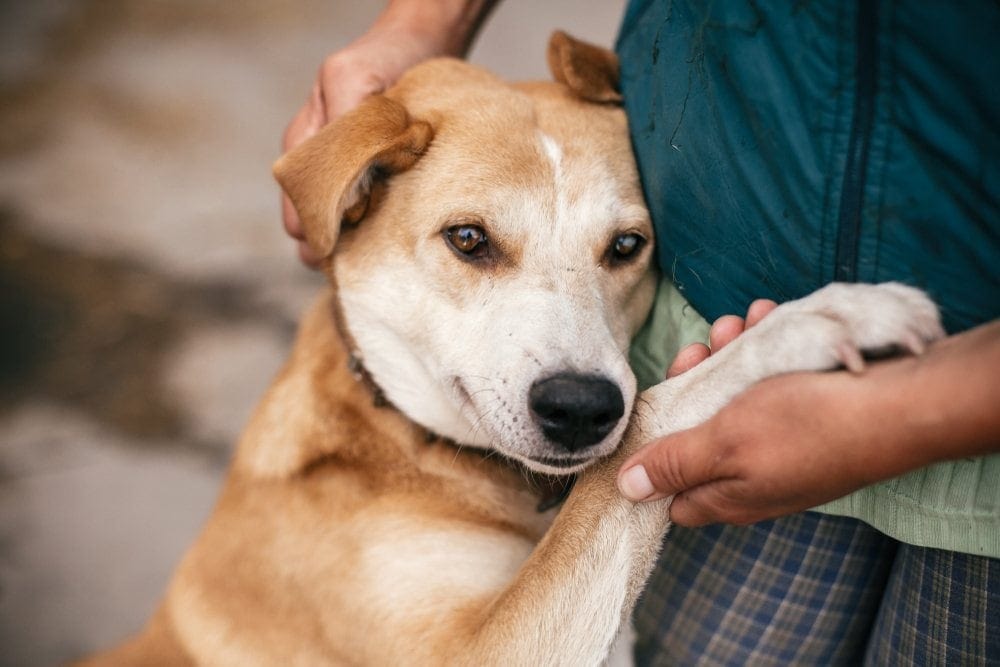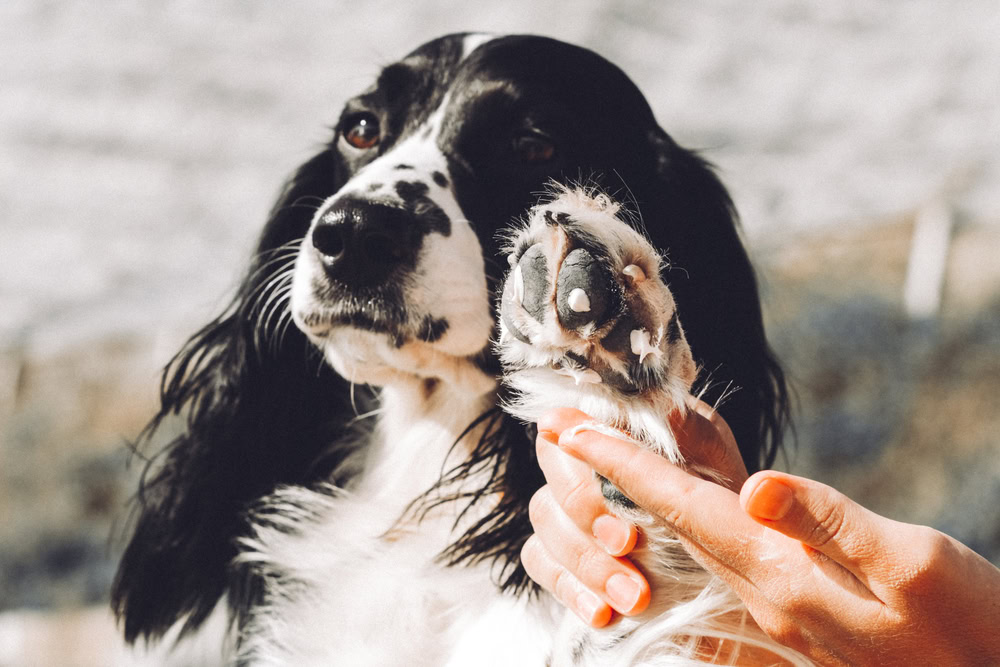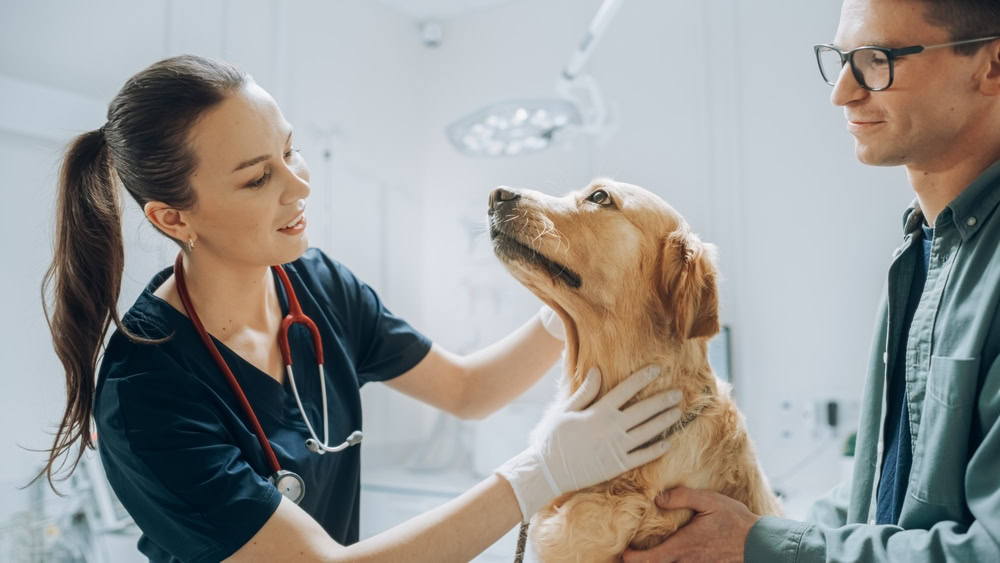We’ve all been there—you walk across the room, only to accidentally step on your dog’s paw in the process. Maybe they yelp and withdraw, only increasing your guilt for the accidental slight. In some cases, your dog may continue to act a little “off” toward you for a period of time. There’s also a possibility that your dog will limp, yelp, or lick their foot which are all signs of pain.
After all, we are (usually) much larger than our dogs, so of course stepping on their paw can be painful!
The consequences of a stepped on paw can range from recovering pretty quickly without ill effect to a broken bone and other damage. Read on to learn what you should do when you step on your dog’s paw.
The Anatomy of the Paw
Here we give a run down on the anatomy of dogs paws so that you can understand the areas and parts that can be injured.
The make up of a dog’s paw is very similar to the human hand. On the front and hind paws, dogs have 4 main weight-bearing toes (digits) which are each made up of three small bones (phalanges). Most dogs also have an extra smaller digit higher up on the inside of their front paws, called a dew claw. Some dogs have hind dew claws or even double dew claws. All these digits end in a nail and contain sensitive tissue called the quick.
The bones within the body of the paw are named the metatarsals (back leg) and metacarpals (front leg) and the paw ends at the joint called the carpus (wrist) of the front legs or tarsus (hock) of the back legs. The paw has nerves and vessels that travel through to each digit, as well as tendons above and below each digit. On the upper surface, the paws are covered by skin and hair, and on the underside, there are spongy paw pads to cushion them.
Any and all of these structures can be injured if you accidentally step on your dog’s paw.


Stepped on Your Dog’s Paw? Here’s What to Do
1. Reassure Them
When you step on your dog’s paw it can come as a shock to you both. Reassure them that you’re not angry with them, and that you did not intend to hurt them. You can do this by speaking in a high-pitched voice and giving them pats. You can try to make your dog forget all about it by distracting them with a nice treat.

2. Evaluate the Paw
Firstly look at the paw from a distance- is it hanging abnormally or obviously broken? Look at how your dog is moving. Are they putting weight on their paw? Are they limping? When vets look at injuries, not wanting to use the leg at all is considered to be more severe than something that just causes a mild limp, although both show that your dog is in pain.
It may be necessary to protect yourself while examining your dog’s feet, if you believe it necessary at this next stage then pop a muzzle on your dog.
If your dog is walking quite well and is fine with you touching their feet, examine their paw up close. If they don’t allow you to look at the paw, this could be a sign that it is painful for them. Remember to not force them, as they may bite due to pain. Look for external wounds. Anything more than a graze will need veterinary treatment but if there is a minor abrasion that does not break the skin, you can treat this with a dog-safe antiseptic.
Check for any torn nails, then examine and feel each digit from the nail up, moving the joints as you go. If your dog reacts painfully, you notice any swelling, or there are bones obviously out of alignment, go to the vet.
You may need to recheck the paw a few times over a period of a couple of hours to evaluate for any swelling, redness, or tenderness.
3. Call the Vet
Your veterinarian will be your first port of call for any injuries sustained to your dog’s foot. After checking the paw to the best of your ability give the veterinary clinic a call and they will guide you as to if an appointment is necessary.
If your dog is experiencing any limping, tenderness, swelling, or redness, or seems to be excessively licking their paw, then you should contact your vet.
Depending on the severity of your dog’s discomfort and swelling, they may want to do an X-ray to ensure nothing is broken or otherwise damaged. If there are no fractures, your dog may need some anti-inflammatories or another type of pain relief medication. They can also treat breaks in the skin with stitches, topical antibiotics, oral antibiotics, bandaging, or other treatments as appropriate.

4. Try a Cool Pack
Remember to always follow the guidance of your vet above all else, so when you call them, ask them if they feel like it’s appropriate to use a cool pack on your dog’s paw. Frozen vegetables, ice packs, and even washcloths soaked in cold water are all good options for helping to reduce swelling to your dog’s paw in the acute phase of the injury. Always ensure there is a layer of material between the cold pack and your dog’s paw, though! Dogs can experience pain and even frostbite from having something frozen pressed directly against their skin for too long. Instead, opt for wrapping the cold pack in a tea towel or washcloth.

What Happens if My Dog Has a Broken Bone?
Your vet may determine from X-rays that your dog has broken (fractured) one or more bones in the paw, and provide a treatment plan.
For noncomplicated breaks, conservative treatment options like splints, bandages, or casts may be appropriate to support the paw until the bones heal. For more complicated breaks or multiple bones affected, surgical plating may be recommended. In both cases, you can expect vet follow-up visits to change the dressing and monitor the paw. Repeat X-rays are often recommended to monitor the healing progress.

In Conclusion
Try not to feel too bad if you step on your dog’s paw! It can be easy to put a lot of blame on yourself for this type of accident, but the more stressed and upset you are, the more stressful the situation will be for your pup. Stay calm and reasonable after you step on your dog’s paw, providing them with a positive distraction from the event. Check the paw over if possible and contact your veterinarian if your dog needs further care. In the case of actual damage to the foot, your vet is the best resource to guide you in how to properly care for your dog’s injured paw.
Featured Image Credit: Te9l, Shutterstock



